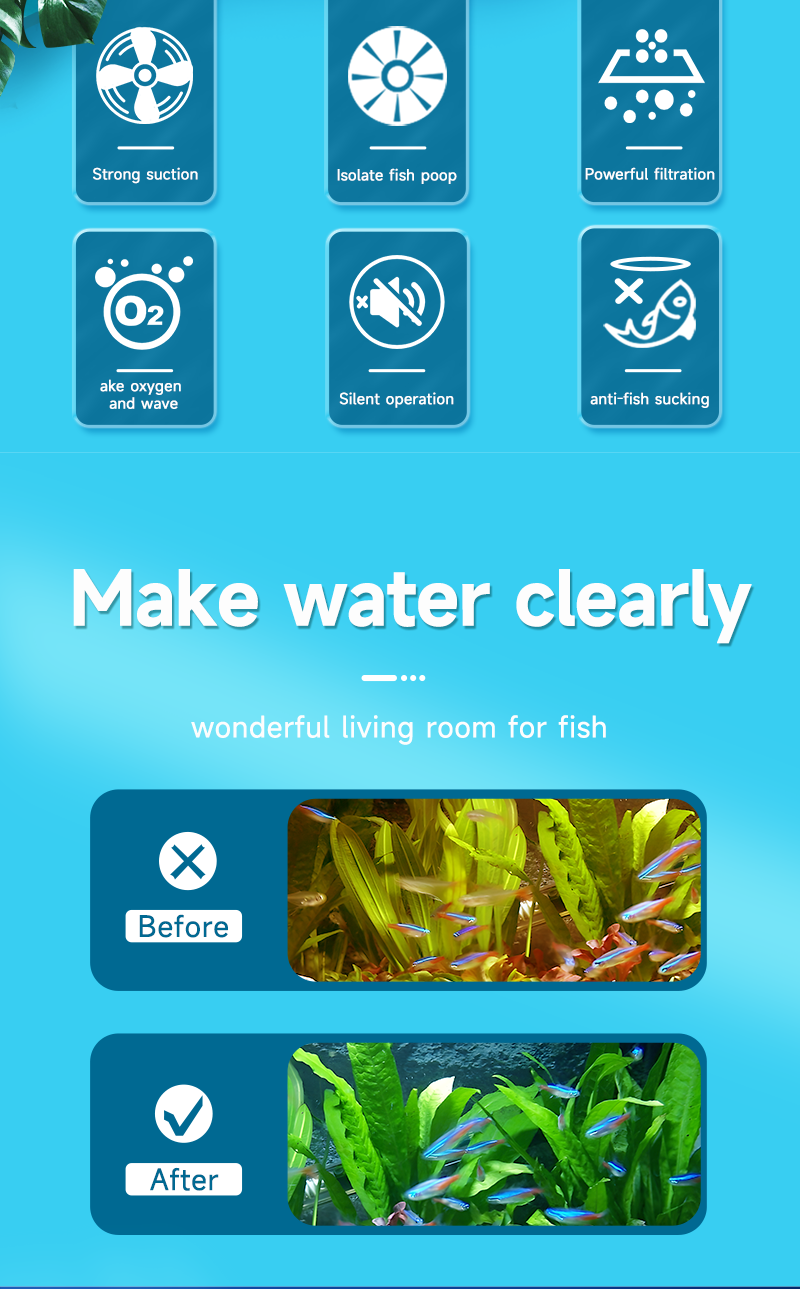In the world of aquarium keeping, maintaining crystal-clear water is a top priority for hobbyists. After all, a clean and healthy environment is essential for the well-being of fish and other aquatic creatures. But how effective are aquarium filters at removing debris, waste, and harmful substances? Let’s take a closer look at the role of filtration in keeping aquarium water in top condition.
The Basics of Aquarium Filtration
Aquarium filters are designed to tackle various types of contaminants. Debris like uneaten food, dead plant matter, and fish waste can quickly cloud the water and lead to poor conditions. Harmful substances such as ammonia and nitrite, which are by-products of fish waste and other organic materials, can be toxic to aquatic life. A good filter needs to address all these issues to keep the water clear and safe.
Mechanical Filtration: The First Line of Defense
Mechanical filtration is all about trapping physical particles. Filters use materials like sponges or foam to catch larger debris as water passes through. This helps keep the water looking clean and prevents gunk from floating around. The key is to choose a filter with the right kind of media for your aquarium’s needs. For example, a fine sponge will catch smaller particles, while a coarser one might be better for larger debris. Regular cleaning or replacement of the mechanical media is crucial to prevent clogging and maintain good water flow.
Chemical Filtration: Tackling Dissolved Impurities
Chemical filtration focuses on removing dissolved substances that can affect water quality. Activated carbon is a popular choice because it can adsorb a wide range of impurities, including colors and odors from the water. This helps keep the water looking clear and smelling fresh. Other chemical media, like zeolite, can specifically target ammonia, which is especially useful in new setups or during ammonia spikes. The effectiveness of chemical filtration depends on the quality of the media and how often it’s replaced.
Biological Filtration: The Heart of a Healthy Aquarium
Biological filtration is where the magic happens. Beneficial bacteria living in the filter media break down harmful waste products like ammonia and nitrite into less toxic nitrate. This process, known as the nitrogen cycle, is crucial for maintaining a stable and healthy environment. The key to good biological filtration is providing plenty of surface area for bacteria to grow, such as with bio balls or ceramic rings. A well-established biological filter can handle the continuous production of waste from fish and other organisms, keeping the water safe and clear.
Factors That Influence Filter Performance
While the type of filtration is important, other factors also play a role in how well a filter works. The filter’s capacity and flow rate need to match the size of your aquarium. A filter that’s too small or has a weak flow won’t be able to keep up with the demands of the tank. Regular maintenance is also essential. Neglecting to clean or replace filter media can lead to clogging and reduced filtration efficiency. Finally, the filter should be compatible with the specific needs of your aquatic setup. Some fish may be sensitive to strong water currents, so adjustable flow settings can be important.
Putting It All Together
A good aquarium filter is like a well-oiled machine, combining mechanical, chemical, and biological filtration to keep the water clean and clear. By effectively removing debris, waste, and harmful substances, it creates a healthy environment for fish and other aquatic life. But it’s not just about the filter itself—regular maintenance and choosing the right filter for your tank’s needs are just as important. With the right setup and care, you can enjoy a beautiful, clear aquarium that’s a safe and happy home for your aquatic pets.
Post time: Jul-07-2025

